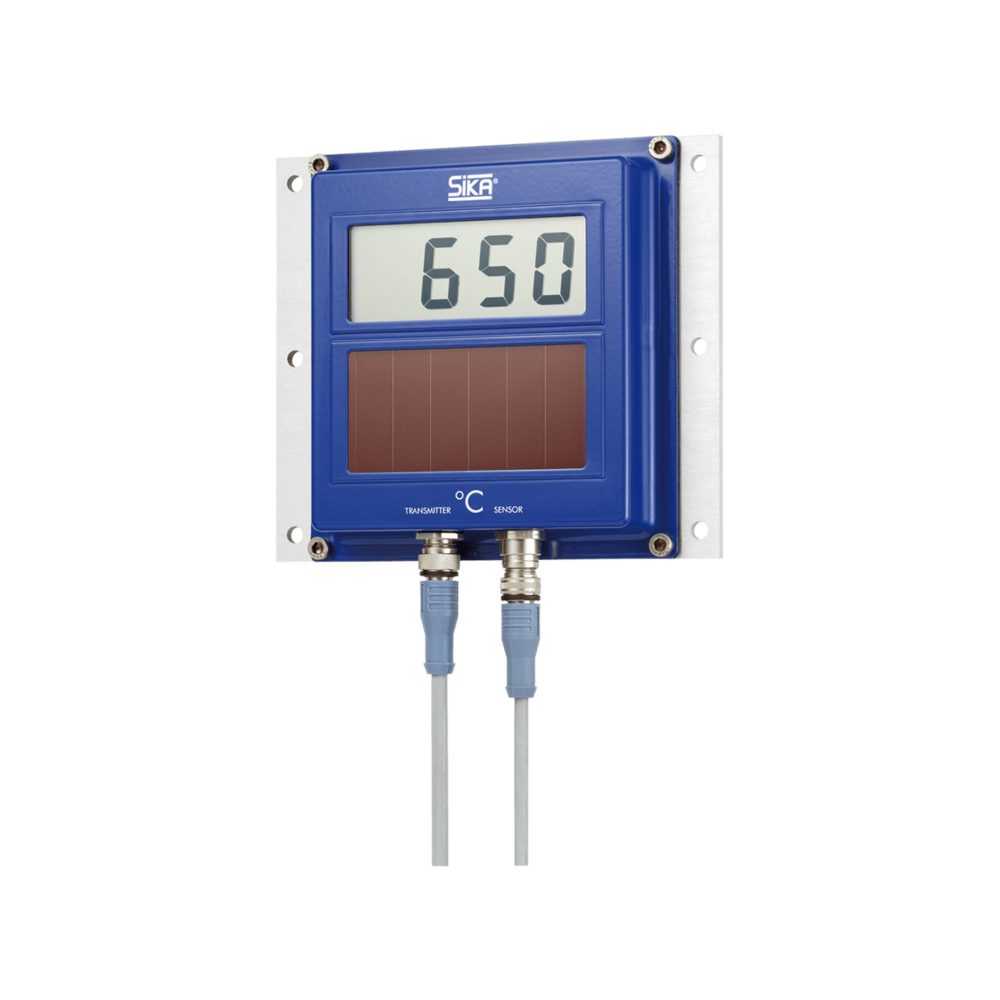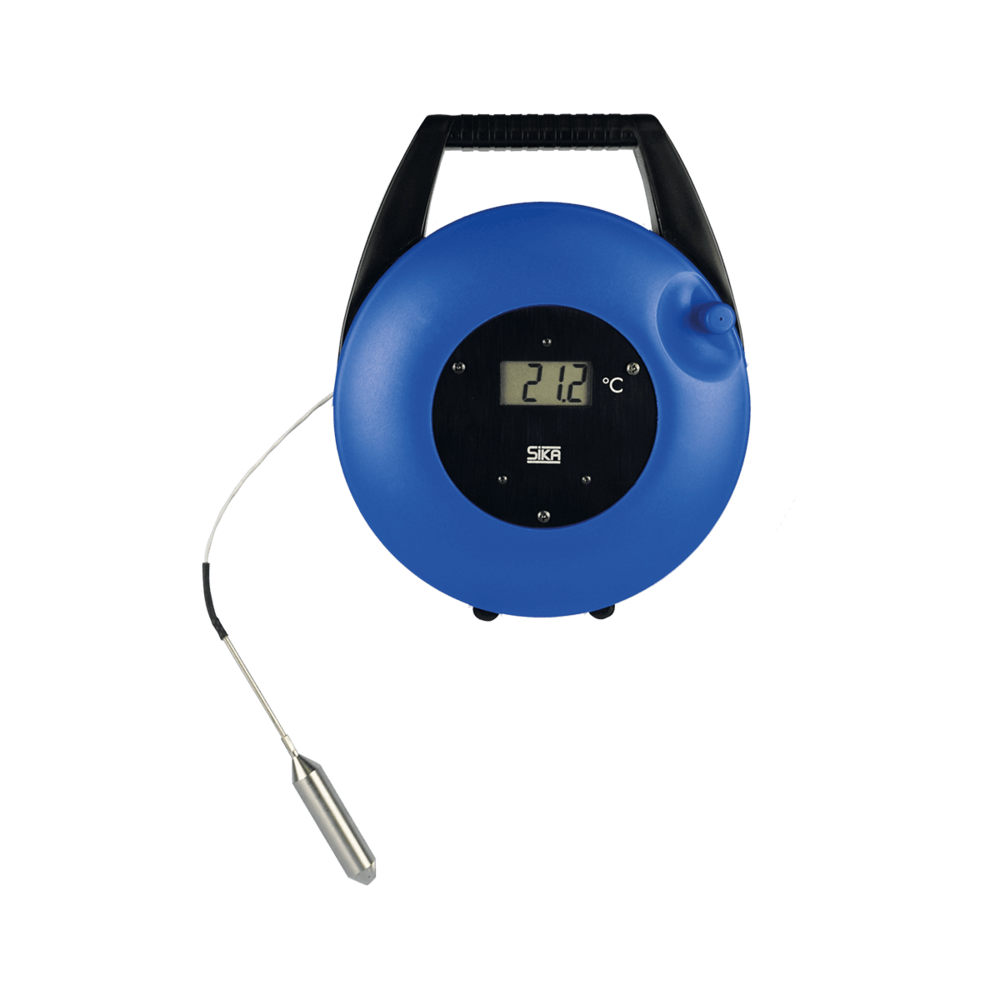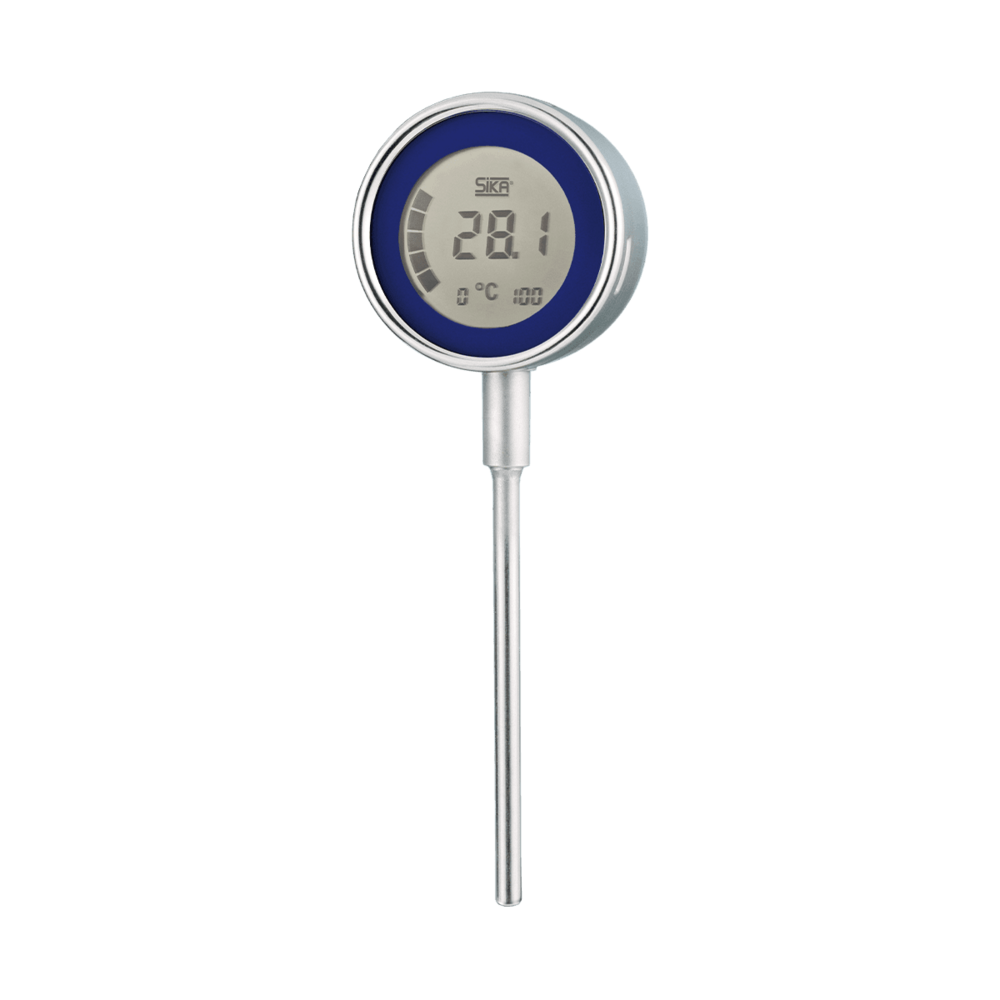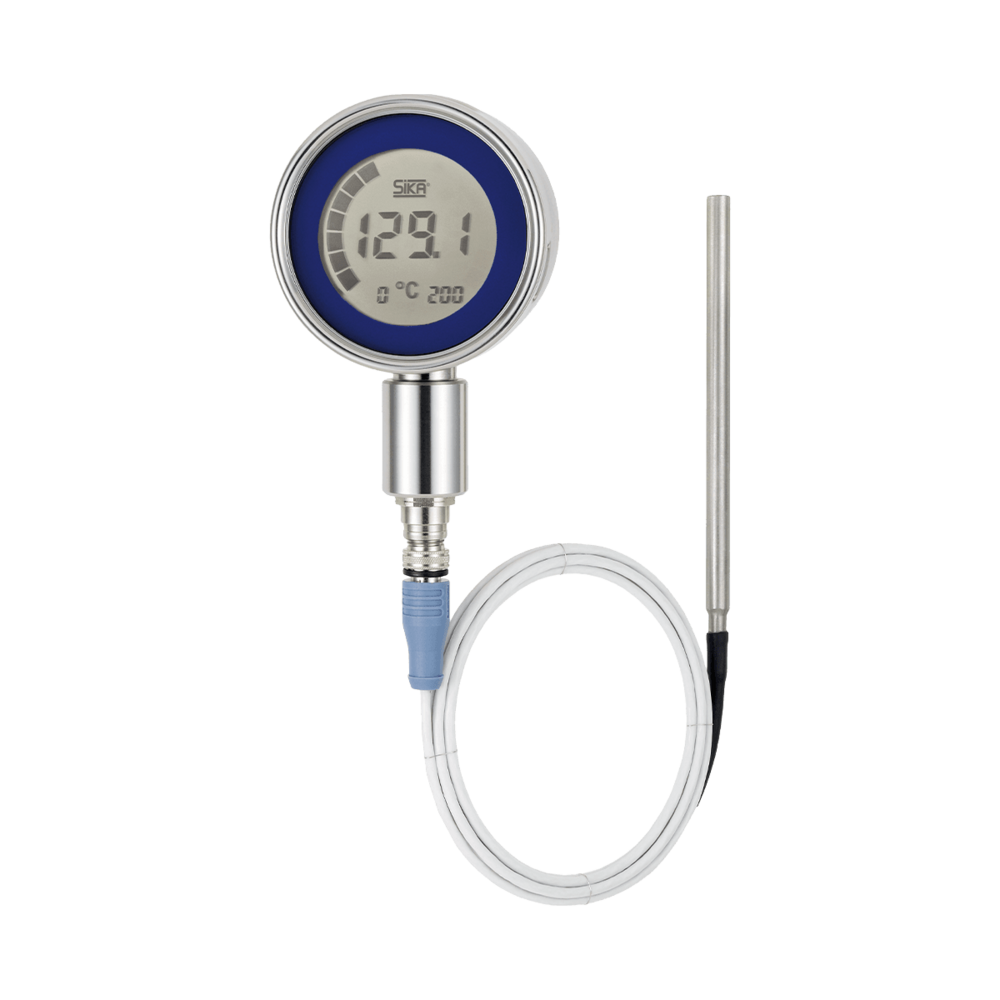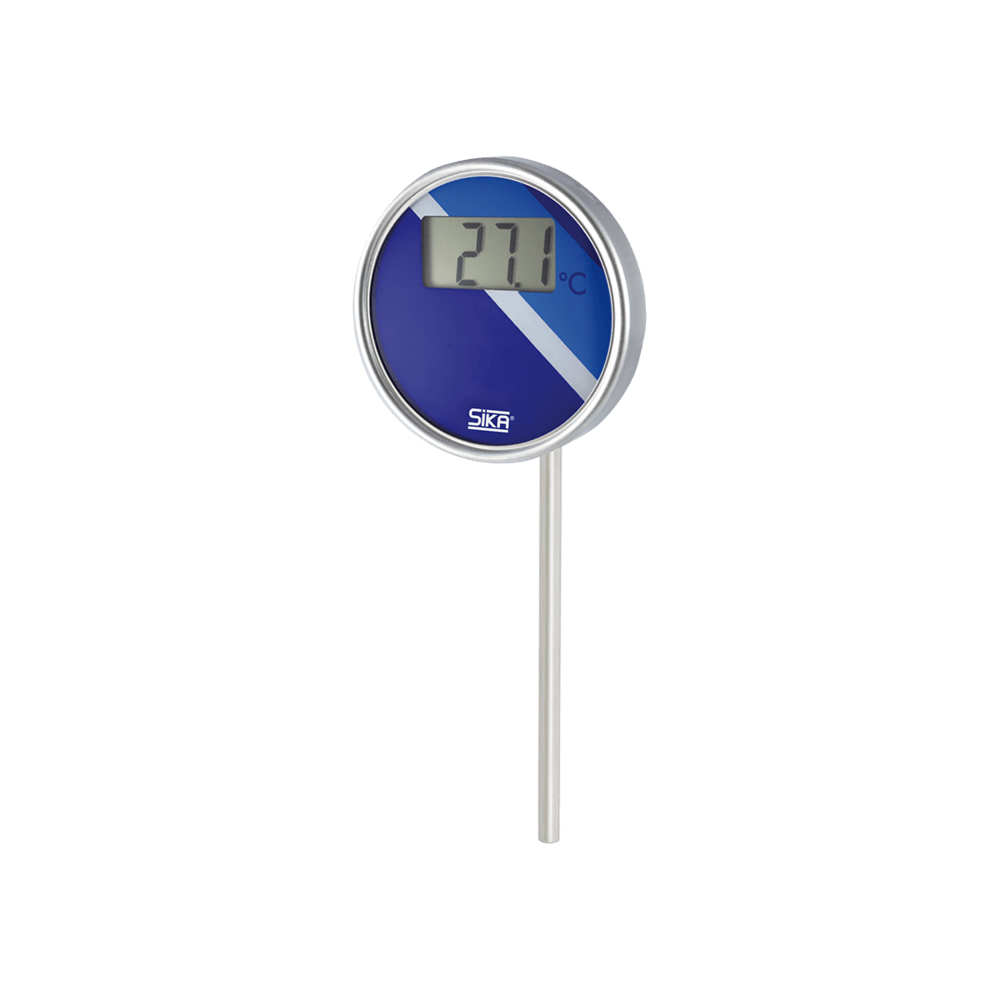1. SIKA Digital Thermometers

The company SIKA has been developing and producing high-quality industrial measurement and calibration solutions in Germany since 1901 and has been offering a wide range of standardised and customised products in the fields of temperature, pressure and flow measurement for over 120 years. The product portfolio ranges from classic machine thermometers and turbine flow sensors to high-precision temperature calibrators. The company's sensors and calibration devices are installed or used by the world's leading device manufacturers and can be found in the products or production of numerous market leaders in a wide range of industries such as heating, ventilation and air conditioning technology, shipbuilding, automotive and commercial vehicle construction and industrial technology.
The digital thermometers of the SolarTemp product series work with a discrete-time measuring method. The cycle time of the measurement starts from 3 sec, so that the operator can read the current measured value in passing. The SolarTemp has an easy-to-read LCD-based display.The instruments of the SolarTemp series have a robust mechanical construction and are designed for industrial use as well as for use under difficult environmental conditions. The IP65 protection class (front side) meets these requirements. The immunity to electromagnetic interference complies with the requirements of the applicable industry standards.
|
The digital thermometers of the CargoTemp product series work with a discrete-time measuring method. The cycle time of the measurement starts from 3 sec, so that the operator can read the current measured value in passing. The DiTemp has an easy-to-read LCD-based display. The instruments of the DiTemp series have a robust mechanical construction and are designed for industrial use as well as for use under difficult environmental conditions. The immunity to electromagnetic interference complies with the requirements of the applicable industry standards. After start-up, the instrument performs an internal self-test, checking the functionality of the connected sensor as well. Automatic diagnostic routines in the microprocessor permanently monitor the sensor signal for plausibility and can thus signal a sensor break via the display unit. The results are displayed as a message.
|
The digital thermometers of the DiTemp product series work with a discrete-time measuring method. The cycle time of the measurement starts from 3 sec, so that the operator can read the current measured value in passing. The DiTemp has an easy-to-read LCD-based display. Two different display versions are available. The core idea for the design of the dual display unit is to create a similarity to the conventional pointer instrument. We have succeeded in doing this with a circular LCD module. With the analogue display, you get the same overview as with conventional pointer instruments. The exact temperature value can also be read from the 3½-digit 7-segment display.
|
The digital thermometers of the DiTemp product series work with a discrete-time measuring method. The cycle time of the measurement starts from 3 sec, so that the operator can read the current measured value in passing. The DiTemp has an easy-to-read LCD-based display. Two different display versions are available. The core idea for the design of the dual display unit is to create a similarity to the conventional pointer instrument. We have succeeded in doing this with a circular LCD module. With the analogue display, you get the same overview as with conventional pointer instruments. The exact temperature value can also be read from the 3½-digit 7-segment display.
|
The digital thermometers of the DiTemp product series work with a discrete-time measuring method. The cycle time of the measurement starts from 3 sec, so that the operator can read the current measured value in passing. The DiTemp has an easy-to-read LCD-based display. The instruments of the DiTemp series have a robust mechanical construction and are designed for industrial use as well as for use under difficult environmental conditions. The IP65 protection class (front side) meets these requirements. The immunity to electromagnetic interference complies with the requirements of the applicable industry standards. After start-up, the instrument performs an internal self-test, checking the functionality of the connected sensor as well. Automatic diagnostic routines in the microprocessor permanently monitor the sensor signal for plausibility and can thus signal a sensor break via the display unit. The results are displayed as a message.
|

